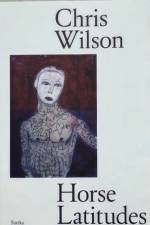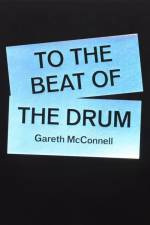av Gareth McConnell
365,-
Sorika is pleased to announce the publication of Gareth McConnell's new book, To the Beat of the Drum. The book comprises photographs of youthful members of Northern Ireland's militaristic, Protestant marching bands, who McConnell carefully situates under the trippy magic of his super-chromatic, hedonistic lighting. These photographs and their mood-altering colours are compelling visual studies of youth and social identity - McConnell gives strong emphasis to how identity is subject to the variable relationships of the individual and the group. The book is accompanied by an essay by Sean O'Hagan (first published in The Observer's New Review, 2021). Much of the youth identity seen in McConnell's previous work relates to outsider or misfit groups, which McConnell has documented with high sensibility. These include rave and dance culture, using and recovering addicts, and the nature of the allegiances formed through musical identity. In an unexpected reframing of his interests, McConnell's attention in To the Beat of the Drum gives attention to young people's participation in the militaristic, culturally complex, power assertions of Northern Ireland's working class culture, in this case a Protestant one. During Northern Ireland's 'marching season' thousands of Protestant parades take place, whose controversial war drums and flutes announce Protestant loyalism's celebration of the military victory of King William of Orange over Catholic King James II in 1690. Catholics have their own strong versions of power assertion, and both Protestants and Catholics may each be seen as simultaneously an insider and an outsider group, within the context of historical group relativities on the island of Ireland. McConnell is from Northern Ireland, and his religion influenced background, in combination with his own outsider life experiences, qualify his contemplation of what insider and outsider status might mean. It seems that McConnell is observing the great paradox of the human experience as both individual and social. This has been addressed by many; Kierkegaard, William James, and syncretism, and includes some areas that might be called those of disorganised (as opposed to organised) religion. In this way McConnell honours ideas and thoughts about the nature of crowds and the individual, and offers hints of something more universal. This universal something seems to be beyond just a local imagination, and might even be blissful and transcendent. Neal Brown, 2022_____'This summer's marching season may be particularly tense, even volatile, owing to unionist anger at the "border in the Irish sea" created by the imposition of the post-Brexit Northern Irish customs protocol. In early April, just a week after McConnell shot these portraits, the worst rioting in years erupted in Carrickfergus and Larne as well as in other working-class loyalist areas in Belfast and Derry. The protagonists were mainly young teenagers, though many commentators suggested that the violence had been orchestrated by older members of loyalist paramilitary groups. The BBC noted that the areas affected were "among the most deprived in the country, with the lowest level of educational attainment in Europe". Against all this, Gareth McConnell's portraits of young working-class Protestant band members are all the more resonant. The young band members often exude a sense of awkward vulnerability. Bathed in soft light and colour, his subjects stare inquiringly into the lens or off into the distance as if distracted by wandering thoughts. Their engagement with the camera is tentative, uncertain, as if they're not quite sure why they have been singled out for its attention. What is also striking is just how young some of them are. You cannot help but wonder how much the band experience is another way of inculcating in them the divisive, often sectarian attitudes that are handed down through the generations. 'Sean O'Hagan | The Observer, 2021





